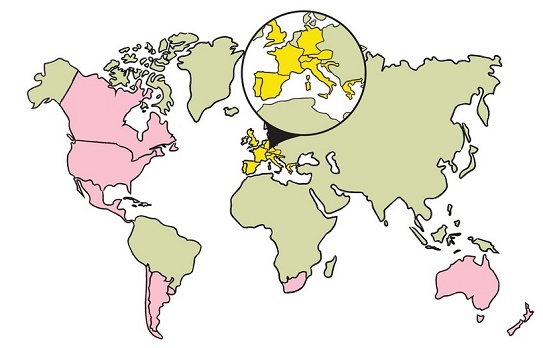Michigan Wine Production
Michigan is an emerging force in American wine.
The region is especially known for cool-climate viticulture and high-quality aromatic whites, sparkling wines, and elegant reds.
The wine production benefits greatly from the moderating influence of the Great Lakes, particularly Lake Michigan.
1,300 Hectares
(3,500 Acres)
5.7 million Litres
175+ Wineries


Michigan’s wine industry began with sweet wines and grape juice made from dark Concord grapes and white Niagara grapes.
Today Michigan is gaining international attention for its Riesling and Pinot Noir wines, known for crisp acidity, aromatic complexity, and moderate alcohol, ideal for food pairing.
Sparkling wines in an increasing specialty, with many producers using traditional méthode champenoise.
Late Harvest and Ice Wine are also prominent due to Michigan's cool climate.
Tourism
The Traverse City area is a top destination, known for wine trails and stunning lake views.
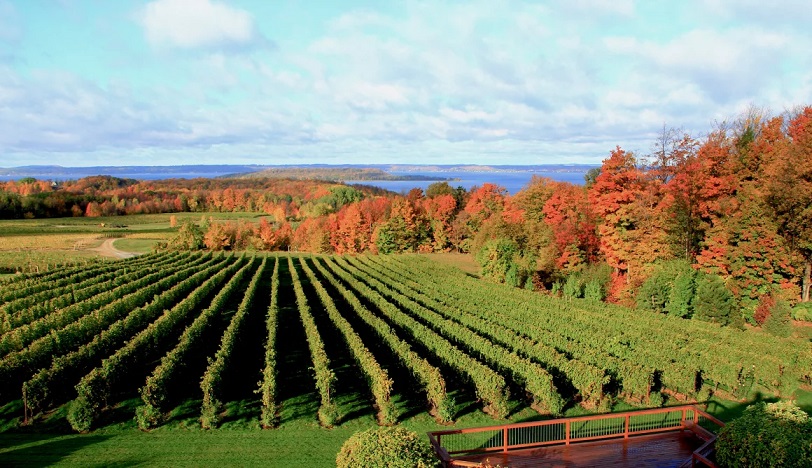
Photo Chateau Grand Traverse
Michigan Wine Regions
Michigan has five officially recognized AVAs (American Viticultural Areas), all located in the western part of the state near Lake Michigan, which provides critical frost protection and extends the growing season.
- Fennville (AVA 1981)
- Leelanau Peninsula (AVA 1982)
- Lake Michigan Shore AVA (1983)
- Old Mission Peninsula (AVA 1987)
- Tip of the Mitt (AVA 2016)

Leelanau Peninsula (AVA 1982)
The Leelanau Peninsula wine region is located on the Northwest Lower Peninsula, near Traverse City. It includes all of Leelanau County, which forms a peninsula between Lake Michigan on the west and Grand Traverse Bay on the east.
The region is famous for elegant white wines with minerality and good acidity.
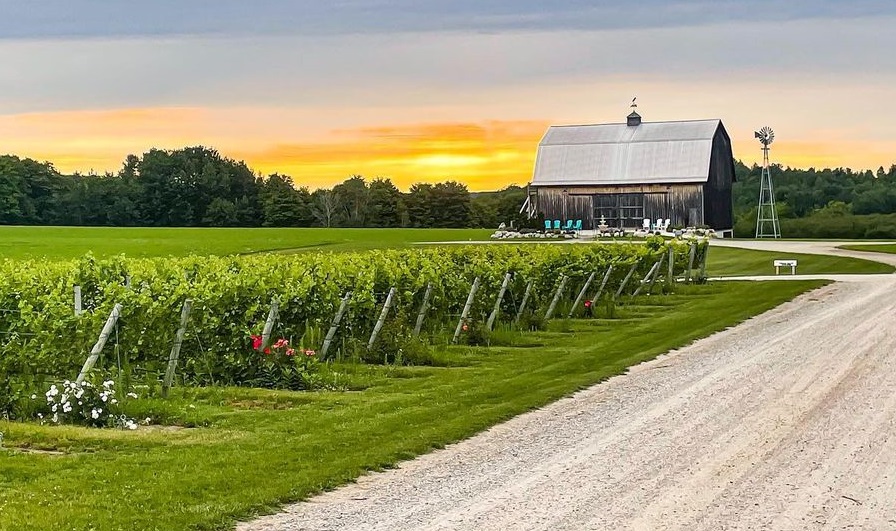
Photo: French Valley Vineyard.
- Climate
Cool Climate. Lake-moderated with significant diurnal range. - Soil
Glacial deposits of clay, sand, and loam on top of bedrock of granite and limestone. - Grapes
Riesling
Chardonnay
Pinot Gris
Pinot Noir
Sparkling
The Leelanau Peninsula Wine Trail
On one of the two peninsulas jutting into Grand Traverse Bay and Lake Michigan, the Leelanau Peninsula Wine Trail in the Leelanau Peninsula AVA is home to more than 20 wineries. Many offer sweeping vistas with vineyards, lakes, and rolling countryside.
Old Mission Peninsula (AVA 1987)
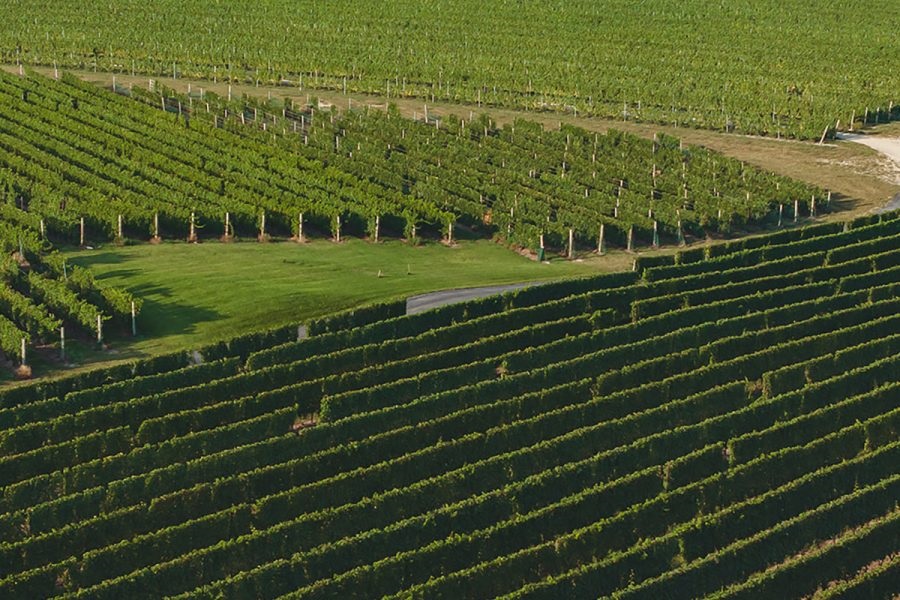
Photo Chateau Grand Traverse
- Climate
Surrounded by Lake Michigan’s Grand Traverse Bay on three sides, this AVA enjoys a near maritime climate. - Soil
Sandy soil with limestone bedrock from old glaciers impart distinctive minerality and acidity to the wines. - Grapes
Riesling
Chardonnay
Pinot Gris
Pinot Noir
Old Mission Peninsula Wine Trail
Heading east and then north out of Traverse City. Leads visitors to the picturesque Old Mission Peninsula. Ten wineries in the Old Mission AVA participate in the trail. They are generally just a few miles apart, with most yielding views of East and West Grand Traverse bays as well as vineyards, orchards, hills, and valleys.
Tip of the Mitt (AVA 2016)
The Tip of the Mitt wine region is locatet at the Northern Lower Peninsula.
"Tip of the Mitt" refers to the nickname used for the area, referring to the mitten-shaped Lower Peninsula. (For reference, the mid-eastern region is often identified as "The Thumb.")
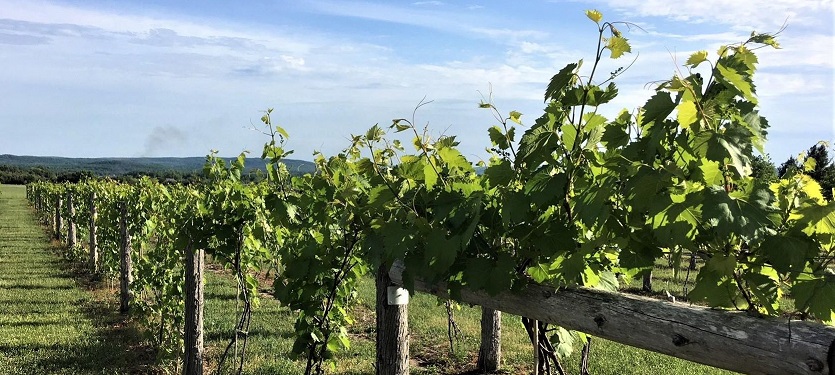
Photo: Crooked Vine Vineyard & Winery.
Tip of the Mitt is a developing region with emphasis on sustainability and innovation. The petition to create the AVA noted that the area was suited for the cultivation of cold-weather varietals such as Marquette and Frontenac. The Grape Growers Association has announced its intent to specialize in cold-hardy vines.
- Climate
Coolest wine region in the state. - Soil
Tip of the Mitt is home to sandy, loamy, and clay soils. The sandy soils are well-draining and ideal for growing grape varietals that require ample drainage, while the clay soils are rich in nutrients and provide excellent water retention for the vines. - Grapes
Cold-hardy hybrids like Marquette, Frontenac, La Crescent.
The Petoskey Wine Region Trail
The state’s northernmost wine trail consists of 14 wineries. Part of the Tip of the Mitt AVA, wineries on this trail grow rich, robust grapes that thrive in cold temperatures.
Fennville (AVA 1981)
The Fennville wine region (the first AVA in Michigan) is located in Southwest Michigan, inland from Lake Michigan.
- Climate
Moderated by Lake Michigan, only a few days in the growing season exceed 32°C (90°F). - Soil
Glacial sandy soils. Well-drained. - Grapes
Riesling
Chardonnay
Cabernet Franc
Lake Michigan Shore (AVA 1983)
The Lake Michigan Shore is located in Southwest Michigan, bordering Lake Michigan.
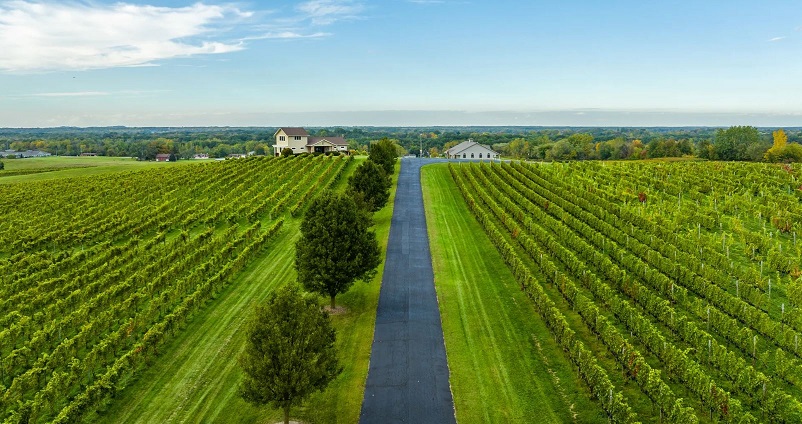
Photo: Filkins Vineyards.
- Climate
Warmest AVA in the state. Benefits from the Michigan lake effect to moderate temperatures and extend the growing season. - Soil
Sandy and Rocky soils from ancient glacial deposits (glacial moraine soils). - Grapes
Cabernet Franc
Merlot
Riesling
Gewürztraminer
Traminette
Chardonnay
The Lake Michigan Shore Wine Trail
Located in southwest Michigan, the Lake Michigan Shore Wine Trail is a collaboration of around 15 wineries in the Lake Michigan Shore American Viticulture Area. The trail is at the southern end of Lake Michigan, which creates a microclimate for fruit growing and protection from weather extremes that helps extend the growing season later into the fall.
Michigan Grape Varieties
Michigan grows a mix of vinifera, French-American hybrids, and native varieties, due to its challenging climate.
Vinifera (European) Grapes
| Grape | Description |
|---|---|
| Riesling | The signature grape of Michigan; dry, off-dry, and late harvest. |
| Chardonnay | Often unoaked or lightly oaked; crisp and fresh. |
| Pinot Gris | Fruity and aromatic whites. |
| Gewürztraminer | Spicy and floral; often semi-sweet. |
| Cabernet Franc | Best performing red. Herbal and spicy. |
| Pinot Noir | Light-bodied, elegant red. |
| Merlot | Grown in warmer AVAs like Lake Michigan Shore. |
| Traminette | Gewürztraminer hybrid; aromatic and spicy. |
Native and Hybrid Grapes
| Grape | Description |
|---|---|
| Vidal Blanc | Used for dry whites and ice wine. |
| Chambourcin | Red hybrid that thrive in colder zones. |
| Frontenac | Red hybrid that thrive in colder zones. |
| Marquette | Red hybrid that thrive in colder zones. |
| La Crescent | Cold-hardy aromatic whites in Tip of the Mitt AVA. |
| Brianna | Cold-hardy aromatic whites in Tip of the Mitt AVA. |
| Concord | Mostly used for sweet, fruity wines and grape juice. |
| Niagara | Mostly used for sweet, fruity wines and grape juice. |
US Wine Production 2023
California has the dominant role in U.S. wine production, producing more wine (680 millon gallons) than all other states combined.
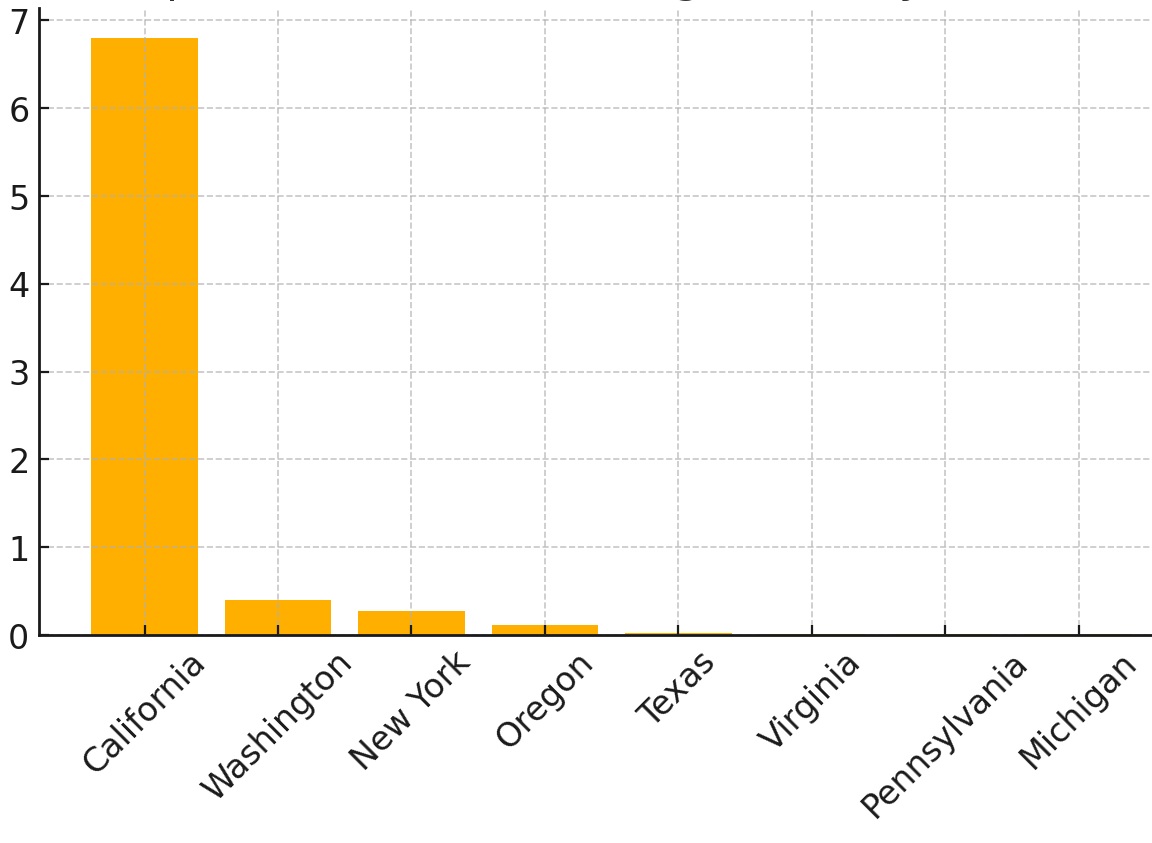
| State | Gallons | Hectares |
|---|---|---|
| 1. California | 680.0 million | 240,000 |
| 2. Washington | 41.0 million | 24,000 |
| 3. New York | 28.0 million | 14,500 |
| 4. Oregon | 12.0 million | 13,000 |
| 5. Texas | 2.1 million | 3,200 |
| 6. Virginia | 1.9 million | 1,800 |
| 7. Pennsylvania | 1.8 million | 1,600 |
| 8. Michigan | 1.5 million | 1,400 |
| 9. Missouri | 1.0 million | 1,300 |
US Grape Plantings
| Grape | Hectares |
|---|---|
| Chardonnay | 36,000 |
| Cabernet Sauvignon | 34,000 |
| Pinot Noir | 22,000 |
| Merlot | 19,000 |
| Zinfandel | 18,000 |
| Syrah | 9,000 |
| Sauvignon Blanc | 8,000 |
| Pinot Grigio | 7,000 |
| Petit Sirah | 4,500 |
| Riesling | 4,000 |
